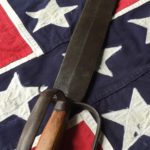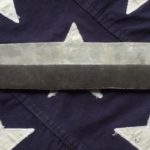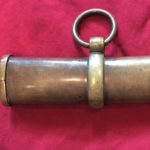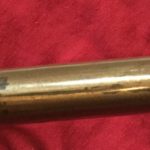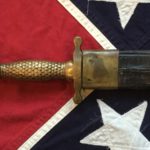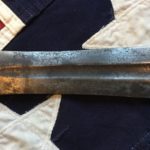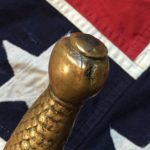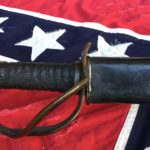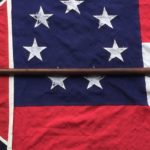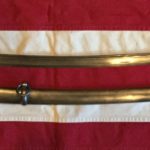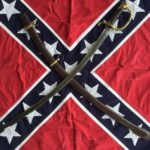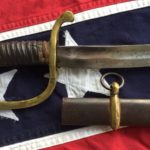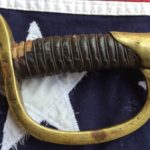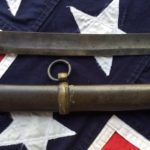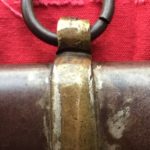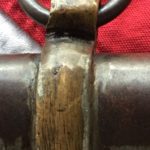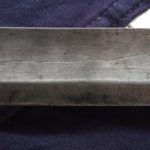- Double D-Guard, Grip & Ferrule
- Double D-Guard Pommel
- Double D-Guards & Grip
- Double D-Guard Ferrule
- Double D-Guard Bowie Knife
- Traces Of File On Blade of D-Guard Knife
- Spear Point Double D-Guard Knife
- Confederate Double D-Guard Grip
- Double D-Guard Ricasso
- Double D-Guard Handle
- Center Ridge Spine, Double D-Guard
- Confederate Double D-Guard Bowie Knife
About the only thing that could make this Double D-Guard any neater was if it could talk. As sturdy as the day it was made and as pretty as any knife around (my opinion of course) this Double D-Guard was probably made by a local blacksmith for a new recruit early war.
This super rare LARGE knife is surprisingly well balanced for its size and weight. Measuring a total of 24 ¼” long with a blade length of 18 ½” and a cross section of 2 ½” wide you could almost consider this a small sword rather then a knife.

With its spear edge, center ridge spine, and true edge blade (top and bottom) this menacing knife is truly a work of art. Made from a file/rasp the blacksmith had mad skills. The two D-Guard iron handles are slightly different in size but equally as sturdy in design. At the base of the wooden handle is ferrule and the peened tang over the guard holding it all together is barley noticeable with no separation, which is a credit to its maker especially after 160 years.
Look closely at the images above and see the meticulous detail by the skilled blacksmith. Was this a product from the great State of Georgia, Alabama or maybe the Carolina’s I guess we’ll never know but for me I’m proud to be the care taker of this wonderful piece of American history.
Thanks for stopping by and hit the FB like button if you enjoyed my newest relic, if you have any questions about this item or any of the other pieces in the Civil War Arsenal feel free to contact me at civilwararsenal@yahoo.com attn: Gene West.







